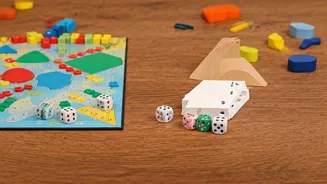Understanding the Anxiety
Math anxiety is a genuine emotional response that involves feelings of unease, apprehension, and even fear when faced with mathematical tasks or situations.
This anxiety can stem from various sources, including previous negative experiences with math, societal pressures, or a lack of self-belief in one's mathematical abilities. The intensity of math anxiety varies from person to person. Those with high levels of anxiety might experience physical symptoms like a racing heart, sweating, and difficulty concentrating during math-related activities, which causes hindrance and causes individuals to avoid math-related subjects or career paths. Recognizing and acknowledging that math anxiety is a real phenomenon is the first step toward addressing it. Understanding its origins is essential for devising effective strategies to overcome it, which ultimately helps individuals develop a healthier relationship with mathematics and improve their performance in the subject.
Building Strong Foundations
A robust foundation in fundamental mathematical concepts is the second vital step in decreasing math anxiety. This involves ensuring a solid understanding of basic arithmetic operations such as addition, subtraction, multiplication, and division. When individuals have a firm grasp of these core concepts, they feel more confident when tackling more complex problems. Regular practice is key to reinforce these fundamental skills. It's recommended to engage in consistent practice sessions. It is also beneficial to vary the types of problems to maintain engagement. This can be achieved through games, puzzles, and real-life applications of mathematical concepts. A strong foundation builds confidence and reduces anxiety. A well-constructed foundation fosters a sense of competence, allowing individuals to approach new mathematical concepts without the fear of getting lost or overwhelmed. This ensures an increased probability of doing well in mathematics.
Changing Negative Thoughts
Negative self-talk can be a significant contributor to math anxiety. These negative thought patterns often manifest as self-criticism, doubt, or the belief that one is incapable of succeeding in mathematics. It is important to challenge these negative thoughts. One helpful strategy is to identify the negative thoughts and then actively reframe them into more positive and realistic ones. For example, instead of thinking, "I'm terrible at math," one could reframe it as "Math can be challenging, but I'm capable of learning with practice." Replacing negative thoughts with positive affirmations can significantly impact an individual's self-perception and confidence. Encouraging the adoption of a growth mindset, which emphasizes the belief that mathematical abilities can improve through effort and dedication, is another beneficial approach. Recognizing that mistakes are a natural part of the learning process can also reduce anxiety. By accepting that setbacks are opportunities for growth, individuals can build resilience and develop a more constructive approach to tackling mathematical challenges.
Breaking Down Problems
Complex mathematical problems often feel overwhelming, which increases math anxiety. It can be particularly effective to break down difficult problems into smaller, more manageable steps. This approach involves analyzing the problem carefully, identifying the known and unknown variables, and then breaking down the problem into smaller components. This technique reduces the perception of difficulty and allows individuals to concentrate on each part without feeling overwhelmed. Visual aids, such as diagrams, tables, or graphs, can be incredibly helpful for visualizing and understanding complex concepts. It can also be very helpful to practice these steps on a consistent basis. Regular practice with problem-solving strategies builds confidence. The methodical process creates a sense of control and reduces the feeling of being lost or confused. This creates an environment of calmness and makes the problem seem simpler than they actually are.
Seeking Support & Help
One of the most effective strategies for decreasing math anxiety involves seeking help and support when needed. It is important to recognize that asking for help is a sign of strength, not weakness. This involves utilizing various resources, such as teachers, tutors, classmates, or online resources. Teachers and tutors can provide personalized guidance. Study groups are helpful in providing a collaborative learning environment where students can share their understanding and help each other. Online resources can offer a wide range of learning materials. Seeking help ensures that you have access to a support system and builds confidence. Seeking help should be viewed as an integral part of the learning process, which is beneficial for building competence and resilience. When learners feel supported, they are more likely to persevere through challenging concepts and less likely to experience the negative emotions associated with math anxiety.
Embracing Relaxation Techniques
It is critical to incorporate relaxation techniques into the approach to address math anxiety. These techniques help manage the physical and emotional symptoms associated with anxiety. Practicing these techniques before a math test or while working on challenging problems can effectively reduce the physiological symptoms of anxiety, such as a racing heart or tense muscles. Deep breathing exercises involve taking slow, deep breaths to calm the nervous system. Mindful meditation focuses on bringing attention to the present moment without judgment, which helps reduce overthinking and worry. Progressive muscle relaxation involves tensing and then relaxing different muscle groups, which releases physical tension. It is very important to make these techniques a consistent part of the study routine. This increases their effectiveness and builds resilience to stress. These techniques help foster a sense of calm and control and allows individuals to approach mathematical tasks with a clearer and more focused mindset.













